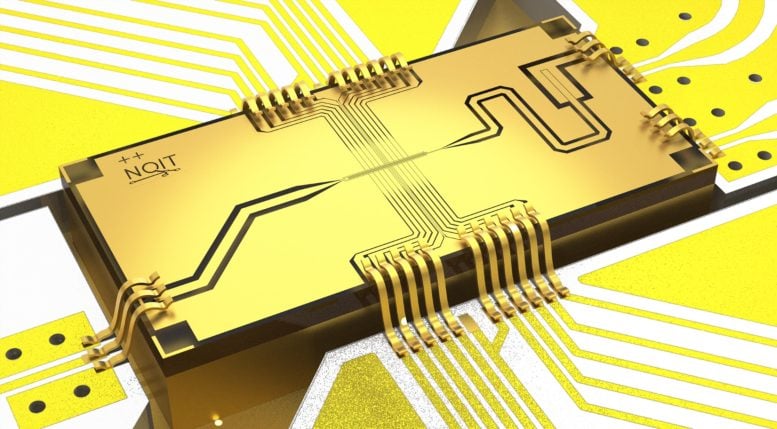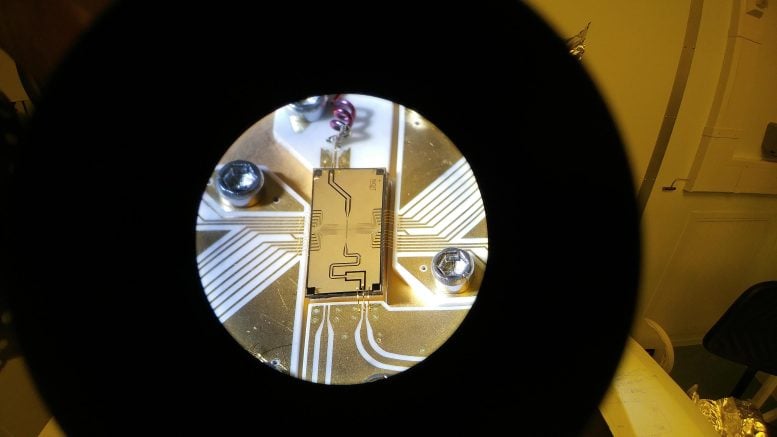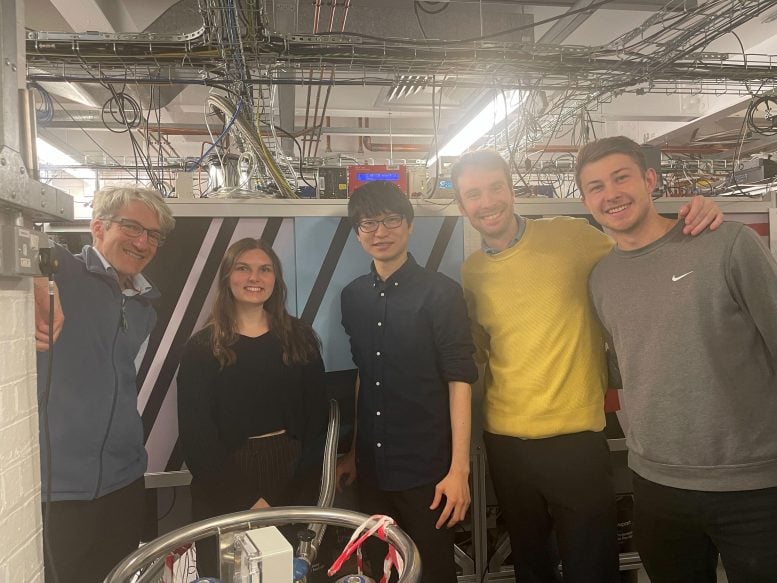
Oxford scientists have set a world record for quantum precision, achieving just one error in 6.7 million operations using microwave-controlled ions.
This advancement could drastically shrink the size and cost of future quantum computers.
Record-Breaking Quantum Accuracy
Physicists at the <span class="glossaryLink" aria-describedby="tt" data-cmtooltip="
” data-gt-translate-attributes=”[{"attribute":"data-cmtooltip", "format":"html"}]” tabindex=”0″ role=”link”>University of Oxford have set a new world record for how accurately a quantum bit, or qubit, can be controlled. They achieved the lowest error rate ever measured in a quantum logic operation: just 0.000015 percent. That’s only one error in 6.7 million operations! That’s nearly ten times better than the previous record, which was also set by the same team a decade ago.
To put it into perspective, you’re more likely to be struck by lightning this year (1 in 1.2 million) than for one of Oxford’s quantum gates to make a mistake.

Toward Practical Quantum Computing
The findings, published recently in <span class="glossaryLink" aria-describedby="tt" data-cmtooltip="
” data-gt-translate-attributes=”[{"attribute":"data-cmtooltip", "format":"html"}]” tabindex=”0″ role=”link”>Physical Review Letters, are a major advance towards having robust and useful quantum computers.
“As far as we are aware, this is the most accurate qubit operation ever recorded anywhere in the world,” said Professor David Lucas, co-author on the paper, from the University of Oxford’s Department of Physics. “It is an important step toward building practical quantum computers that can tackle real-world problems.”
To perform useful calculations on a quantum computer, millions of operations will need to be run across many qubits. This means that if the error rate is too high, the final result of the calculation will be meaningless. Although error correction can be used to fix mistakes, this comes at the cost of requiring many more qubits. By reducing the error, the new method reduces the number of qubits required and consequently the cost and size of the quantum computer itself.

Fewer Qubits, Smaller Machines
Co-lead author Molly Smith (Graduate Student, Department of Physics, University of Oxford), said: “By drastically reducing the chance of error, this work significantly reduces the infrastructure required for error correction, opening the way for future quantum computers to be smaller, faster, and more efficient. Precise control of qubits will also be useful for other quantum technologies such as clocks and quantum sensors.”
This unprecedented level of precision was achieved using a trapped calcium ion as the qubit (quantum bit). These are a natural choice to store quantum information due to their long lifetime and robustness. Unlike the conventional approach, which uses lasers, the Oxford team controlled the quantum state of the calcium ions using electronic (microwave) signals.

Microwaves Over Lasers
This method offers greater stability than laser control and also has other benefits for building a practical quantum computer. For instance, electronic control is much cheaper and more robust than lasers, and easier to integrate in ion trapping chips. Furthermore, the experiment was conducted at room temperature and without magnetic shielding, thus simplifying the technical requirements for a working quantum computer.
The previous best single-qubit error rate, also achieved by the Oxford team, in 2014, was 1 in 1 million. The group’s expertise led to the launch of the spinout company Oxford Ionics in 2019, which has become an established leader in high-performance trapped-ion qubit platforms.
The Bigger Challenge Ahead
Whilst this record-breaking result marks a major milestone, the research team caution that it is part of a larger challenge. Quantum computing requires both single- and two-qubit gates to function together. Currently, two-qubit gates still have significantly higher error rates—around 1 in 2000 in the best demonstrations to date—so reducing these will be crucial to building fully fault-tolerant quantum machines.
Reference: “Single-Qubit Gates with Errors at the 10−7 Level” by M. C. Smith, A. D. Leu, K. Miyanishi, M. F. Gely and D. M. Lucas, 12 June 2025, Physical Review Letters.
DOI: 10.1103/42w2-6ccy
The experiments were carried out at the University of Oxford’s Department of Physics by Molly Smith, Aaron Leu, Dr. Mario Gely and Professor David Lucas, together with a visiting researcher, Dr. Koichiro Miyanishi, from the University of Osaka’s Centre for Quantum Information and Quantum Biology.
The Oxford scientists are part of the UK Quantum Computing and Simulation (QCS) Hub, which was a part of the ongoing UK National Quantum Technologies Programme.
Never miss a breakthrough: Join the SciTechDaily newsletter.
